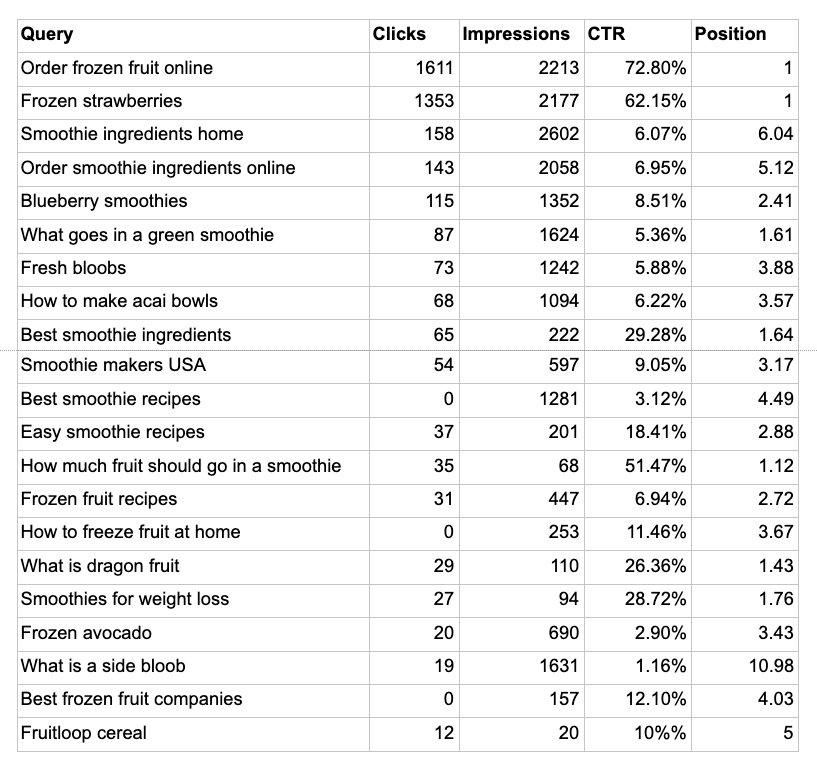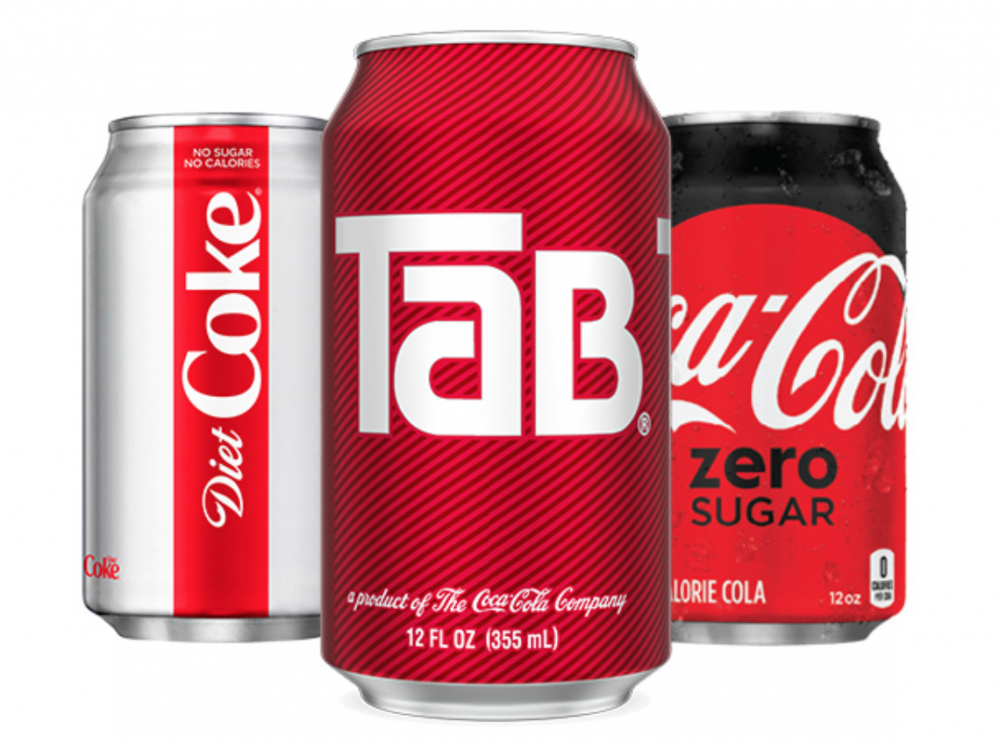| | | | 🧲 WTH is an SEO Magnet? 🧲
|
|
| It's your new best friend for traffic in this mad, mad post-cookie world.
We call it an SEO Magnet because it's a piece of content purpose-built to "attract" search traffic from Google. Like any piece of content on your site, it's always running—and all of the traffic it generates is free. No tricksies.
You just need one solid piece of content that solves a problem well.
There's a good chance you can use the content you already have.
Lastly, you need the SEO strategy for making it a Google-search winner.
That's what Russ is teaching Friday in
How To Build an SEO Magnet!
He's been using, honing, and teaching these methods for years. They work.
Register before the end of Thursday and you'll save $200, like usual.
Friday and beyond, the price jumps from $95 to $295!
|
|
| | | | | Today: some validation for our email-marketing case, (Bing) Site Explorer is way better than (Microsoft) Internet Explorer, and Coca-Cola closes its Tab after six diet decades.
But first...
|
|
| | | "In the late 1800s, the Victorian aesthetic was defined by ornate, embellished interiors covered in fabrics, wallpaper, art, and chandeliers as far as the eye could see.
"Then the influenza outbreak hit, which coincided with the scientific discovery of viruses, and suddenly it became clear that simple, streamlined spaces were far easier to keep clean. Paul Overy, an architectural historian, points out that decorative features in 19th-century homes harbored dust, which was believed to cause illness."
💬 Elizabeth Segran, writing for Fast Company, on how COVID killed the latest wave of ornate maximalism—and how it isn't the first time this has happened.
Nowadays, minimalism sells because 'minimal' seems cleaner and 'cleaner' definitely sells. The other big, salient point Segran makes: minimalism is trending hard because physical space is a very hot commodity these days, and minimal styles tend to take up less space both physically and visually.
|
|
| | | | | | | Use Your Google Ad Impressions for Keyword Research |
|
| Yesterday we said some stuff about SEO and John Travolta making a pulpy fictional comeback. It was a bit of a weird analogy. The point is that SEO is a big deal. Yuge, even. Especially now that third-party cookies are getting canceled and big-tech antitrust talks are trending hard.
Part of SEO is doing keyword research. Like everything Internet, there's no shortage of ways to do that. But before you ride off into the digital Wild West, take a gander at your paid-ad results. They'll probably yield some ripe new search terms that you don't have enough content around yet.
This is also a great keyword methodology to use if you've ever been daunted by a list of terms that seem unwieldy.
$aver's Tip: Using your Google Ads to mine search terms for inbound content is also a great way to squeeze the most out of your ad budget, especially if you're considering reducing spend. Don't say we don't help you stay thrifty.
How to Use Your Google Ad Results to Find New Keywords
Step 1: Write down the list of search terms for which you've gotten impressions over the past 12 months.
Let's say you're selling frozen fruit online (for example) and you've run a few ads for your business. Over the last year, the search terms you've had ad impressions and clicks for might look something like this:
|
|
| | | You get the idea.
Anyway, some of the search terms might be garbage (what in the hell is a 'side bloob'?), but some should be right on point and fit with what you're selling.
Step 2: Find the most relevant search terms for which you haven't yet gotten any clicks, but that have earned you some decent impressions.
In this case, 'Best smoothie companies' and 'How to freeze fruit at home' both have zero clicks, but 'How to freeze fruit at home' looks most applicable to a frozen fruit business.
Step 3: Use your newfound search terms and weave them into your inbound content strategy.
For starters, you could plug the terms into Moz or Google Keywords Planner to check up on search volumes, ranking difficulty, and find their like-minded search term pals. You could even use Google Trends to see how your newly-revealed search terms have been faring in the proverbial popularity contest.
Once you're confident that your search terms are golden, you'll want to create some new content (or bulk up your existing content) around those search terms to increase your chances of ranking organically for them.
If your new terms would do well on some of your existing pages, slot 'em in there in a way that makes sense (for example, you can use the genius Now With More strategy).
Otherwise, create some blog content, videos, TikToks Reels, whatever tasty content you can muster. Remember, you'll rank higher when you produce content that somehow exceeds the quality of what's currently ranking.
Aaaaaand you're done!
... just kidding. SEO is like the mafia: there's only one way out. Your SEO work is never done, and you'll need to re-evaluate these keywords every month. But using this keywords research methodology is one (reasonably quick!) way to stay on top of your SEO game.
|
|
| | | | | umm... WHY DO YOU THINK WE DO THIS? Whenever people claim that email marketing is dying, we want to laugh very hard in their faces. It's a staple of the digital-marketing diet for a number of reasons, and theCLIKK is built as an email-first publisher for a number of reasons—not least of which its surprising ability to maintain top-of-mind connection with prospects and customers. For any business doing digital marketing, email addresses (legitimately earned) have a LOT of dollar value and it's easy to forget just because you can't spend email addresses.
We mention all of this because Morning Brew—which we've openly cited as a predecessor and influence—is in talks to sell to Business Insider, and potentially for $75M or more. Not bad for a 5-year-old email-newsletter company, right? Turns out that maintaining a list of over 2 million verified subscribers can attract a LOT of revenue... hence the high price tag.
BING is KICKING ASS and TAKING NAME SERVERS: Bing might never truly compete with Google's search-market share, but they're giving a lot of Google's SEO tools a run for their money just by making certain sets of tasks far more manageable for the average webmaster. Bing's Site Explorer used to exist as part of their Webmaster Tools, but they've split it off and made Site Explorer its own thing now that it's more powerful. You can get the full deets from Search Engine Journal here, but as a quick preview: (1) you can see stats for individual pages OR for sets of pages, which are organized into nested folders based on your sitemap, and (2) the individual-page view allows you to inspect URL, request indexing, or pop open their super-handy Robots.txt Tester Tool for trying out a new URL.
|
|
| | | | | | | We throw around the terms 'landing page' and 'squeeze page' pretty regularly, so it's worth stopping to define them more clearly.
In the simplest terms, a landing page is the page where someone "landed" on your site. In slightly more technical terms, it's the first page a particular visitor sees in a particular session browsing your site.
For analytics purposes, that's pretty much the entire definition—though in more conversational settings, there might be the added implication that a 'landing page' is something you designed specifically for people to land on.
The term 'squeeze page' has an entirely separate meaning, though landing pages and squeeze pages often do overlap.
A squeeze page is a webpage specifically designed to minimize the options available to users. The logic here is fairly simple: if you only want people to take one action, don't offer them other options!
People are well aware that they can hit Back, or nuke the tab entirely and vanish into the wind. You don't need to provide these options to them.
Again, there's a fair bit of overlap—a squeeze page is often a good design approach to building landing pages—but they're not the same thing, and you can find squeeze pages in a handful of different applications. Notice, for example, that theCLIKK's homepage only offers a single option to visitors aside from the top/main navigation (and a lot of squeeze pages will omit that navigation to keep viewers super-focused on what's in front of them). |
|
| I'LL TAKE 'You Can Anti-Trust Me' FOR $300, ALEX
|
|
| | | Jeopardy Clue: This company held the copyrights to the board game MONOPOLY from 1935 until their acquisition by Hasbro in 1991. |
|
| Answer... errm.... question at the bottom of this email. |
|
| | | | | Coca-Cola is Finally Canning Tab |
|
| We mean they're giving it the deep-six, not the six-pack |
|
| In a minor historical acknowledgement, Coca-Cola will be retiring TAB soda after nearly 60 years on the market.
Tab was Coca-Cola's first diet soda, and they didn't call it Diet Coke because (at that time) the company had a policy against using the Coca-Cola name for anything except the flagship product. They changed their minds on the latter point in 1982, when they introduced Diet Coke as a new separate product.
Most people don't know that Diet Coke isn't actually based on the Coca-Cola formula; it's based on the Tab formula and uses a different sweetener, i.e. aspartame instead of Tab's saccharin.* Coke Zero is the diet soda based on the Coca-Cola formula.
Anyhow, it's barely sold at all since Diet Coke was introduced, and they've kept it around basically just as a long-term branding play. Until now.
|
|
| | | *Quick FYI: The idea behind diet-soda sweeteners is that they're hundreds or even thousands of times sweeter than typical table sugar by weight (hence the corresponding adjective "saccharine" for "excessively, cloyingly sweet"). They're not calorie-free, but you need so little of them that they wind up adding tiny fractions of a calorie, which is "zero" for Nutrition Facts purposes. |
|
| Premium Workshops from theCLIKK
- Lead Generation Mastery: Predictably build an email list of qualified prospects for B2B or B2C sales [Registration Fee: $295]
- Email Newsletter Mastery: How to Plan, Launch, and Virally Grow an Email Newsletter that Nurtures Leads and Drives Sales [Registration Fee: $295]
|
|
|
| 'JEOPARDY' QUESTION: What is Parker Brothers?
The board game Monopoly has a fairly long history, stretching all the way back to 1903 and American anti-monopolist Lizzie Magie.
If you heard something like "Monopoly was designed to illustrate the pitfalls of unregulated free-market capitalism," that's more true than false. It'd be a little more precise to say it illustrates the pitfalls of concentrating land ownership, which is the central focus of Georgist single-tax theory.
Magie originally invented two variants of the game: one in which players are all rewarded for generating wealth, another in which the goal is to create a monopoly and crush your opponents. Guess we know which version made the cut. 😬
|
|
| | | ADVERTISE // LICENSE OUR CONTENT // SUBSCRIBE
Copyright ©2020 Modern Publisher, LLC. All rights reserved.
538 S. Main St. Columbia, IL 62236
Love today's issue of theCLIKK? Hate it? Reply to this email and let us know. We're listening.
Some links are affiliate links. This means that if you sign up or buy something we might make a commission. That said, we only link to things we believe are beneficial to you, the reader. Pinky promise.
Issues? Email support@theclikk.com |
|
|
|
|





No comments:
Post a Comment